This old square in the center of Montreal reflects styles from more than one hundred years of French Canadian history.
Its Origins

The area known as the Place d’Armes (French for “parade ground”) dates back to the seventeenth century. Locals would come to this part of town, near the Rue Notre-Dame, to watch the members of the military engage in maneuvers. That accounts for the name eventually given to the square, which was established in the 1800s after the old Notre-Dame church was torn down and replaced with a new basilica. At first, the new public square was used as a hay and wood market. Later, in the Victorian era, a garden was established here.
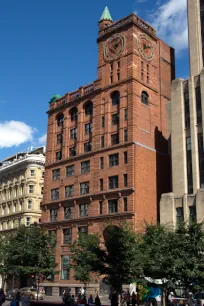
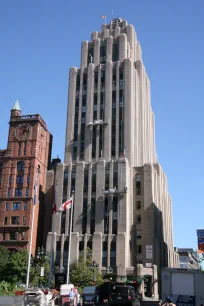
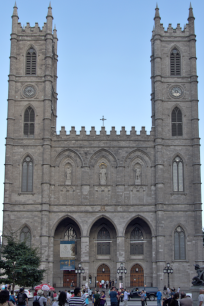
Around the Square
The beauty of the area around the Place d’Armes is that the buildings surrounding the square are representative of so many different eras.
Montreal’s first skyscraper sprung up along this square. The New York Life Insurance Building, completed in 1888, was a whopping eight stories tall and boasted the city’s first elevator. Designed by architects Babb, Cook and Willard, an ornate clock tower added another three stories to the building. Sculptor Henry Beaumont enhanced the ornate exterior.
Steel skyscrapers appeared around the Place d’Armes in the second decade of the twentieth century. The Royal Trust Bank Building and the Duluth building were clad in stone and both boasted ten stories, at the time the height limit for commercial buildings in the city.
In 1929, the Aldred Building was built on the square. This Art Deco gem is an excellent example of its style and reflects one of Montreal’s interesting architectural rules of the time, which stated that skyscrapers should all have “setbacks”, designed to ensure natural lighting for the streets below.
Between 1965 and 1967, yet another skyscraper – this one indicative of glass-and-steel post-war architecture – rose along the Place d’Armes. The National Bank of Canada Tower remains the only example of this style of architecture in the entire city. The tower rises 32 floors to a height of 133 meters (436 feet).
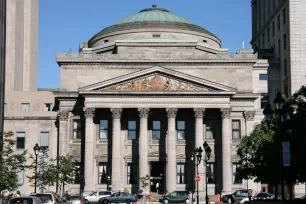
But there is more than just skyscrapers around the Place d’Armes. One of the most interesting buildings is the Bank of Montréal Building, which dates from 1847. The English-born Canadian architect John Wells was clearly influenced by the Pantheon in Rome when he designed this Neo-Classical domed building.
Of course, the focal point of the square is the stunning Notre Dame Basilica. Built during the nineteenth century, this Neo-Gothic masterpiece was said to have so moved its Protestant creator that he converted to Catholicism before he died.
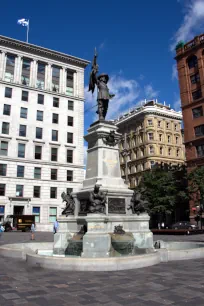
Maisonneuve Monument
The many historic buildings surrounding the square draw the attention from the Monument à Maisonneuve (Maisonneuve Monument), a monumental fountain which is prominently situated in the center of the Place d’Armes. It was designed by the Canadian sculptor Louis-Philippe Hébert and erected here in 1895. It honors the founder of Montreal, Paul Chomedey de Maisonneuve.
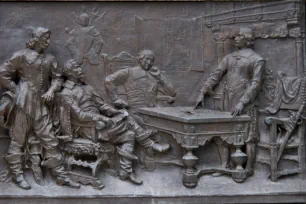
The four bronze figures at the foot of the pedestal show Charles Le Moyne, a military chief who is depicted holding a sickle; Lambert Closse, a governor shown holding a gun and accompanied by his dog; Jeanne Mance, founder of the first hospital in Montréal, shown alongside a child in her care; and finally an Iroquis warrior holding a tomahawk.
The bas-reliefs between the statues depict historical events. Below those four bas-reliefs are mascarons, which spout water into a basin below.

